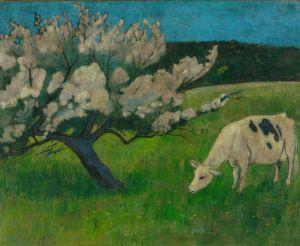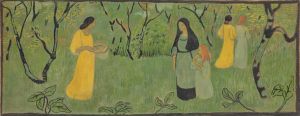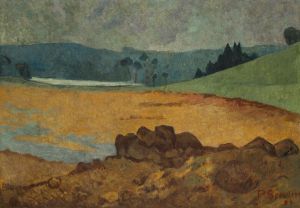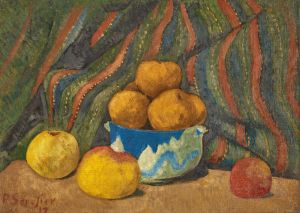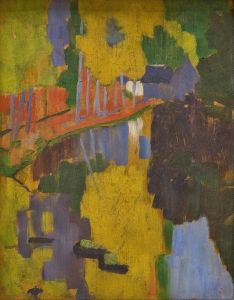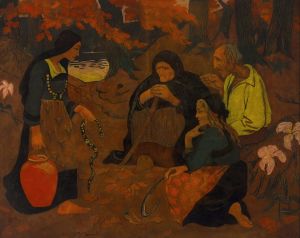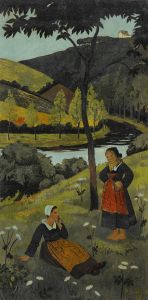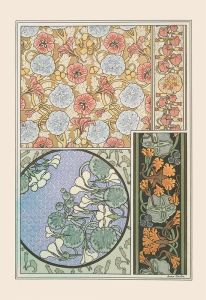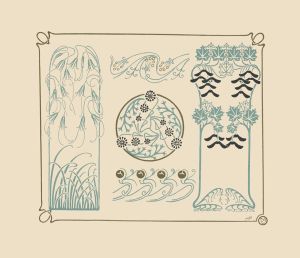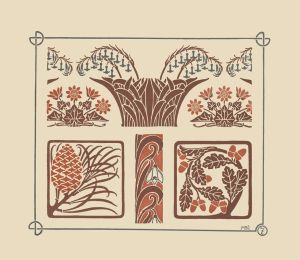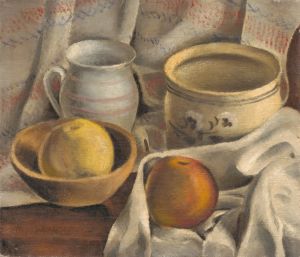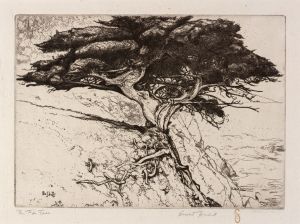
Nature Morte Avec Maïs Et Tomates
A hand-painted replica of Paul Sérusier’s masterpiece Nature Morte Avec Maïs Et Tomates, meticulously crafted by professional artists to capture the true essence of the original. Each piece is created with museum-quality canvas and rare mineral pigments, carefully painted by experienced artists with delicate brushstrokes and rich, layered colors to perfectly recreate the texture of the original artwork. Unlike machine-printed reproductions, this hand-painted version brings the painting to life, infused with the artist’s emotions and skill in every stroke. Whether for personal collection or home decoration, it instantly elevates the artistic atmosphere of any space.
Paul Sérusier's Nature Morte Avec Maïs Et Tomates (Still Life with Corn and Tomatoes) is a painting created by the French Post-Impressionist artist Paul Sérusier. Sérusier, a prominent figure in the late 19th and early 20th centuries, was a key member of the Nabis, a group of avant-garde artists who sought to synthesize symbolism and decorative art. The Nabis were heavily influenced by Paul Gauguin, and Sérusier himself played a pivotal role in disseminating Gauguin's ideas among his contemporaries.
This still life painting exemplifies Sérusier's interest in bold colors, simplified forms, and the symbolic potential of everyday objects. The composition features corn and tomatoes, arranged in a deliberate and harmonious manner. Sérusier's use of color is notable, as he employs a palette that emphasizes the vibrancy of the natural elements while maintaining a sense of balance and unity. The painting reflects the Nabis' focus on decorative qualities and their departure from strict naturalism.
Sérusier's work often explored the relationship between color, form, and meaning, and Nature Morte Avec Maïs Et Tomates is no exception. The painting's flat planes of color and stylized depiction of the objects align with the Nabis' philosophy of art as a means of expressing inner emotions and ideas rather than merely imitating reality. This approach was influenced by Gauguin's emphasis on "synthetism," which prioritized the artist's subjective interpretation over realistic representation.
The exact date of creation for Nature Morte Avec Maïs Et Tomates is not widely documented, but it likely falls within the period when Sérusier was actively engaged with the Nabis, roughly between the late 1880s and early 1900s. During this time, Sérusier produced numerous works that explored similar themes and techniques, contributing to the broader Post-Impressionist movement.
As with many of Sérusier's works, Nature Morte Avec Maïs Et Tomates reflects his interest in combining the spiritual and the material. The choice of everyday objects like corn and tomatoes may carry symbolic significance, though Sérusier often left the interpretation of such symbols open to the viewer. The painting's decorative quality also underscores the Nabis' belief in the integration of art into everyday life, blurring the boundaries between fine art and applied art.
Today, Paul Sérusier is remembered as a pioneering figure in modern art, and his works, including Nature Morte Avec Maïs Et Tomates, continue to be studied for their innovative approach to color, form, and symbolism. The painting is an example of Sérusier's ability to transform ordinary subjects into compositions of profound aesthetic and emotional resonance. Information about the current location or ownership of the painting is not readily available in public records.





